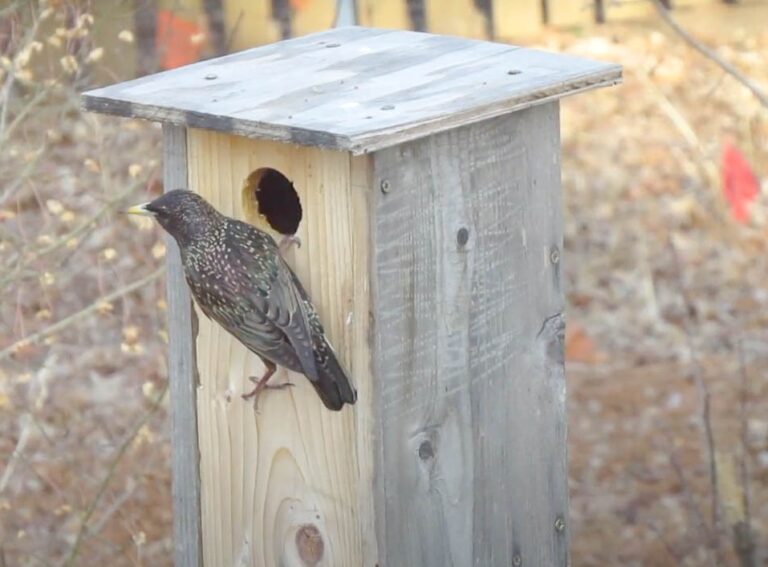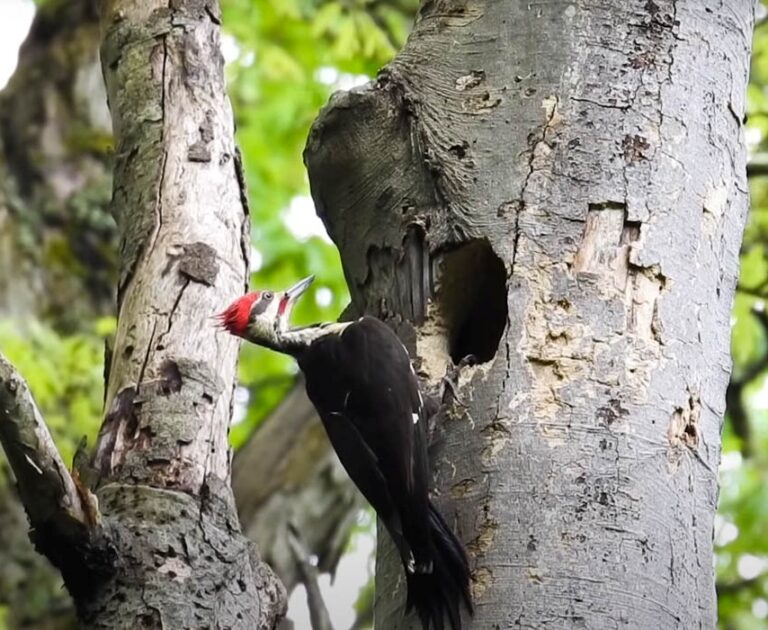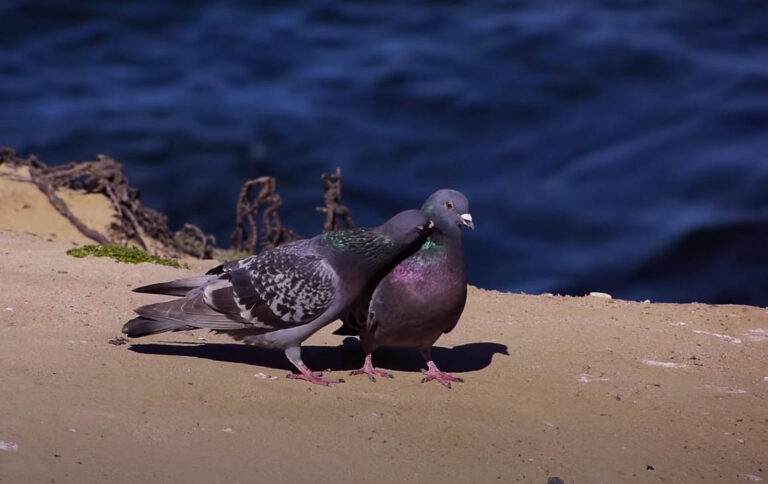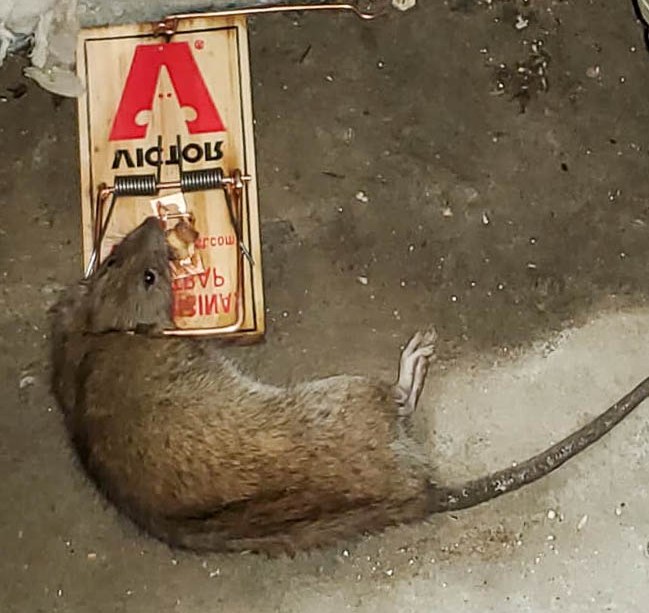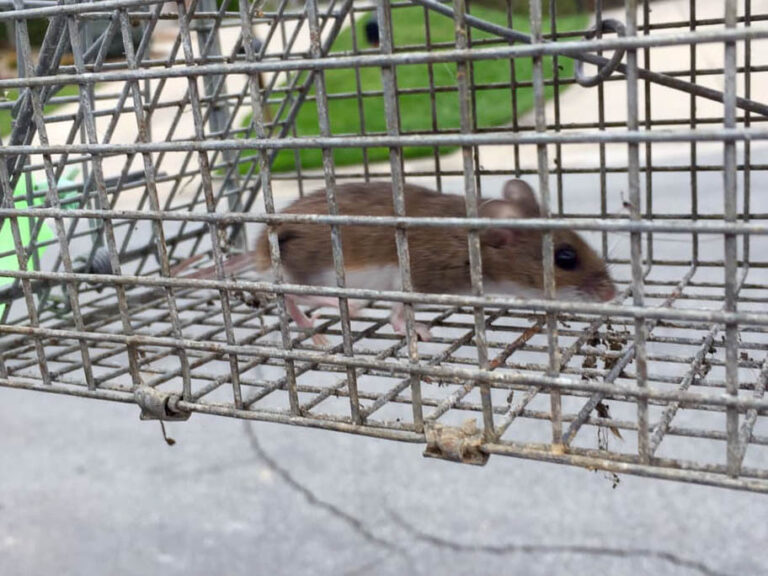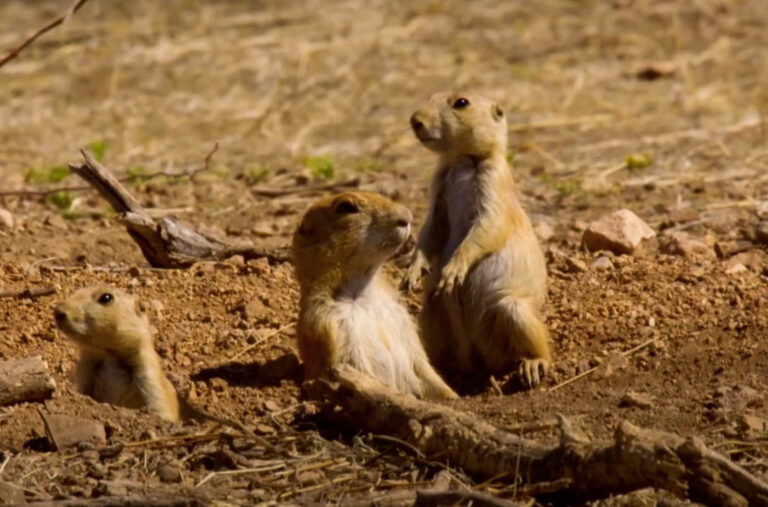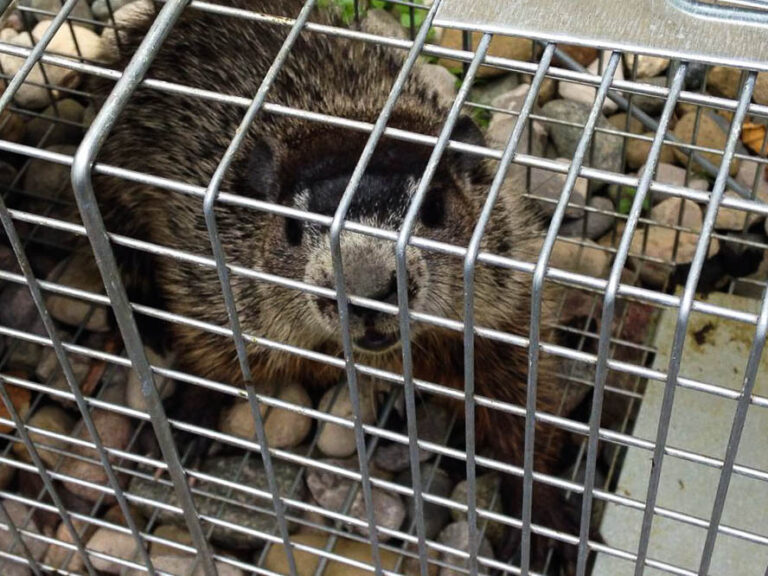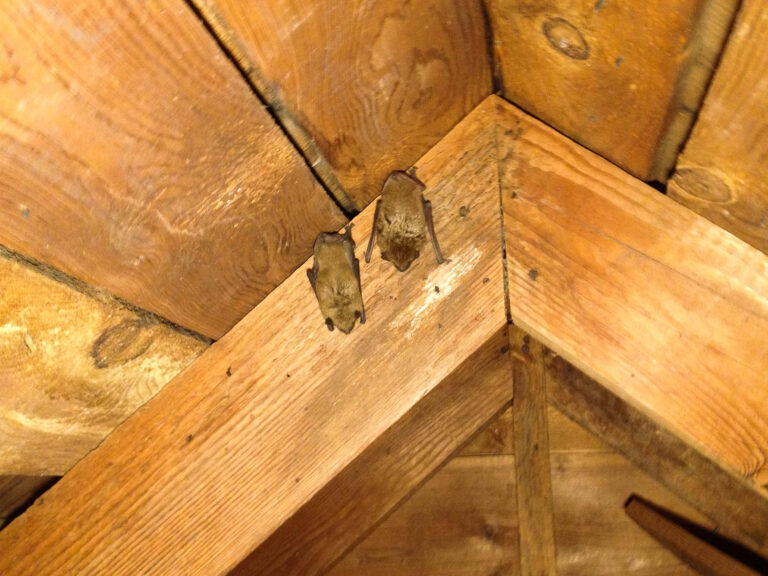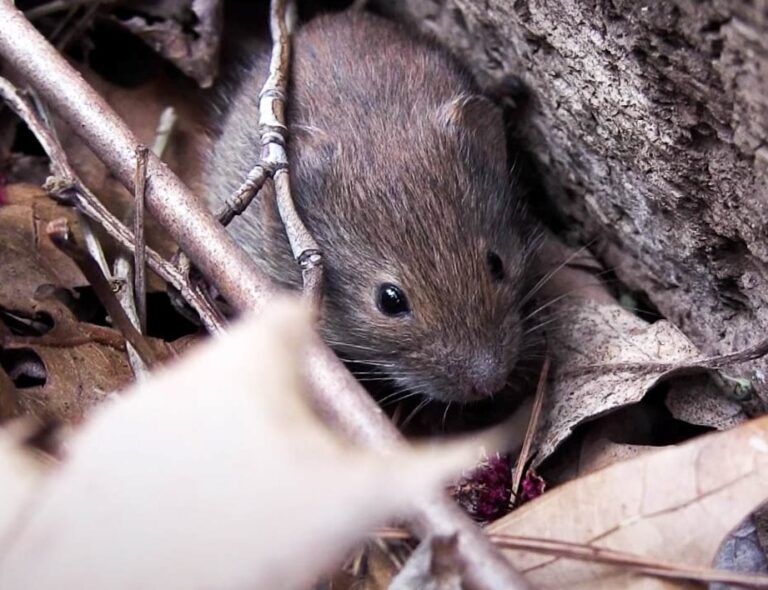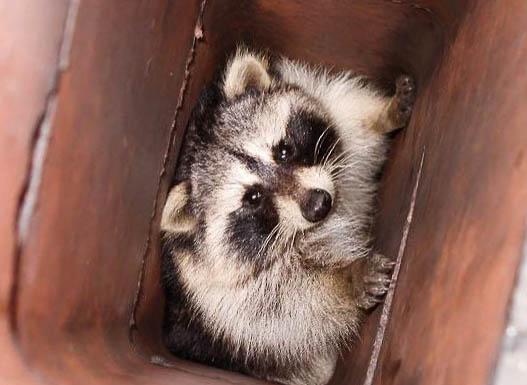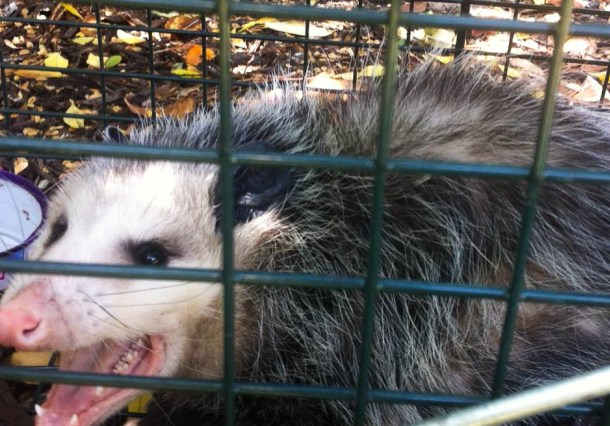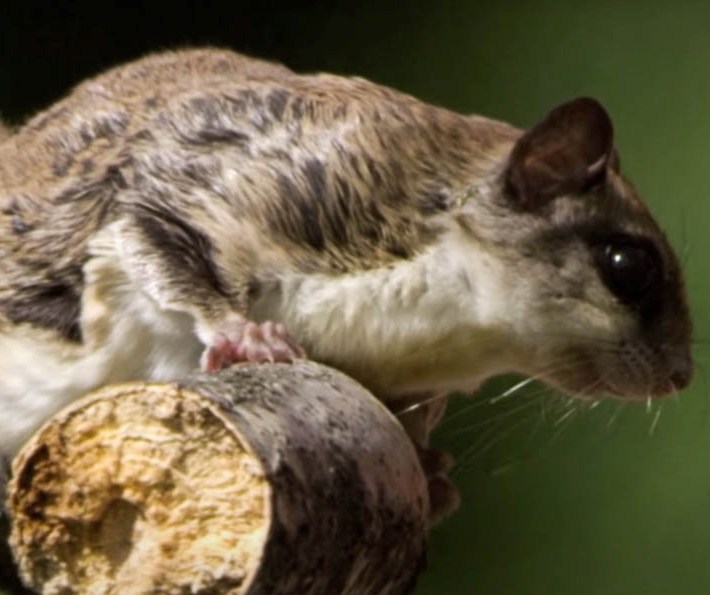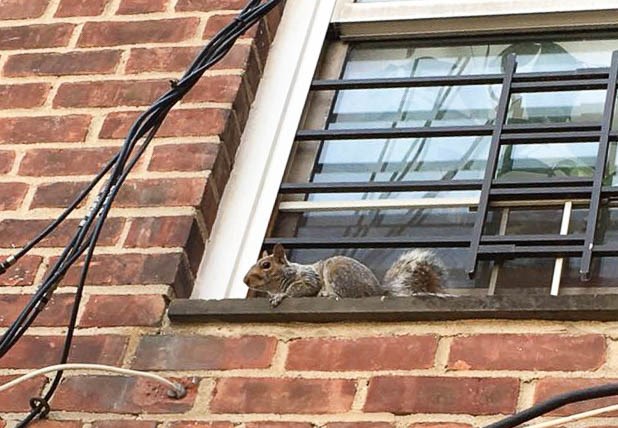About Starlings
Appearance
Starlings are mostly passerine birds that belong to the family Sturnidae. They have strong, gripping feet, sure, swift flight, and a gregarious nature.
Starlings have glossy dark-colored plumage with a purple/green sheen reflection in the light. They have long pointy bills (yellow during the breeding season and dark at other times), black eyes, and pinkish-red short feet.
These birds are small to medium-sized, the smallest being the Kenrick’s starling (Poeoptera kenricki) at 15cm (5.9 in) or Abbott’s starling (poeoptera femoralis) with a weight of 34g (1.2 oz.). The biggest size a starling can attain is among the Nias hill myna (Gracula Robusta) at 36cm (14 in) and a weight of 400g (14 oz.). However, the longest species are the white-necked myna (50cm/20 in)
The appearance of juveniles can change after the first molting. The plumage turns grayish brown, with lots of white spots on their head and breast. Telling apart the different sexes of starlings by the plumage is difficult.

Starlings are mostly passerine birds that belong to the family Sturnidae. They have strong, gripping feet, sure, swift flight, and a gregarious nature.
Starlings have glossy dark-colored plumage with a purple/green sheen reflection in the light. They have long pointy bills (yellow during the breeding season and dark at other times), black eyes, and pinkish-red short feet.
These birds are small to medium-sized, the smallest being the Kenrick’s starling (Poeoptera kenricki) at 15cm (5.9 in) or Abbott’s starling (poeoptera femoralis) with a weight of 34g (1.2 oz.). The biggest size a starling can attain is among the Nias hill myna (Gracula Robusta) at 36cm (14 in) and a weight of 400g (14 oz.). However, the longest species are the white-necked myna (50cm/20 in)
The appearance of juveniles can change after the first molting. The plumage turns grayish brown, with lots of white spots on their head and breast. Telling apart the different sexes of starlings by the plumage is difficult.
Behavior
Starlings are highly social and gregarious animals. They move in large flocks and formation (with lots of aerobatic displays) called “murmuration” all the time. Flocks can number in the tens of thousands to millions and do not discriminate from species. When on the ground, they waddle about rather than hop.
They are mostly monogamous and breed close to the flock. However, fights for breeding sites can result in death. Starlings also show great aggression to other birds when defending their nests and usually chase other (native) birds from their nests. They breed and then molt once a year. Though the spots from molting can wear off by spring, then they assume their “default” appearance.
Starlings have a great range of sound mimicry. They can imitate the sounds of human calls, alarms, car horns, and tens of other birds, mostly simple, low-frequency sounds.
Starlings are adaptable omnivores and scavengers; they will feed on almost anything they find. Diet can include: berries, nectars, vegetables, fruits and grains, insects, millipedes, worms, frogs, snakes, spiders, and often rummage in human areas.
Habitat
Starlings can inhabit quite a range of places on earth, except the dry sandy deserts. They prefer open grasslands, shrubs, parks, and other human areas. They were originally absent in America but for intentional human migration. Only a few species can be found in some parts of Australia.
Some of them migrate throughout the year, while others don’t, depending on their locations. They make their nests in holes in walls, trees, or buildings. Most times, they chase other birds from their nests. Both sexes usually contribute to preparing the nest, and it can last between 1-3 days. Females are known to return to their nests for consecutive years.
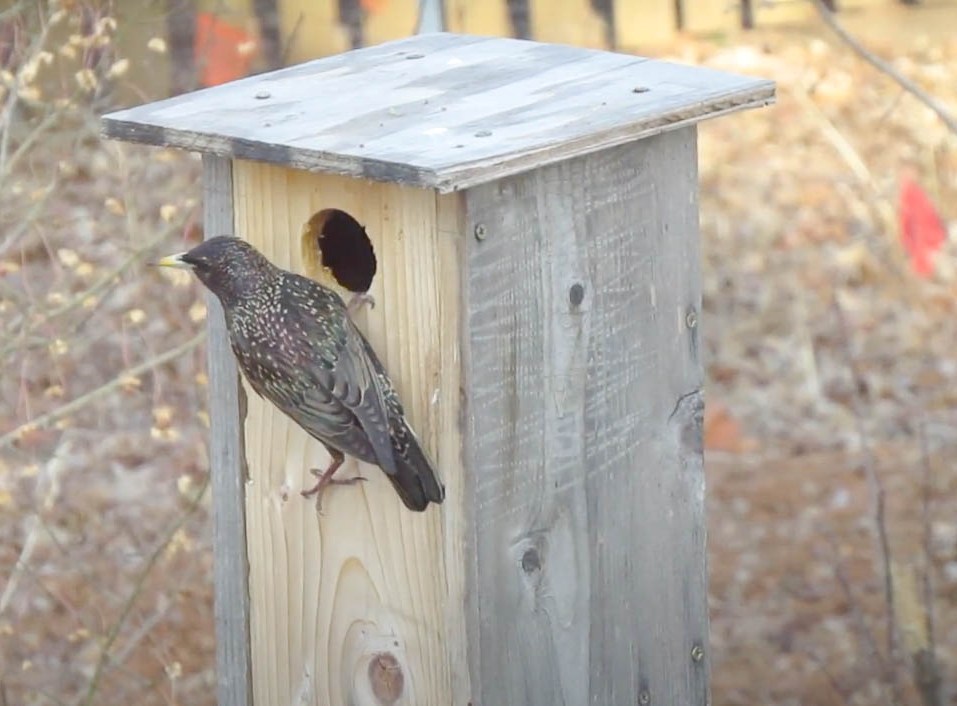
Life Cycle
The breeding season for starlings is usually between spring and summer. Females lay between 4 – 7 pale blue eggs, laying an egg per day. The incubation period lasts about 12 days, and brooding periods may be shared between parents; the female starling (>70%).
The females produce about 2-3 hatchlings that are naked and blind until the 6th-7th day. Both parents feed the nestlings for 3 weeks and the fledglings for another 1-2 weeks. Within 2 months, they would have attained their basic plumage. Then they leave the nests to join the flock.
The average lifespan for a starling is between 2-3 years in the wild. Though, there was a record for 22 years, 4 months in captivity. Predators like falcons, hawks, owls, eagles, kites, and to a lower level, raccoons, squirrels, stoats, and other rodents hunt them. Also, human actions are speeding up their decline.
Damages They Cause
While they are pretty to watch, starlings are pugnacious, menacing creatures.
Damage to plants/crops
Starlings cost farmers yearly losses of hundreds of millions of dollars in damages to crops and plants. Also, their great flock can destroy and overwhelm your orchards.
Menace in the homes
They can creep into your homes through holes and begin to breed. Their noises in the attic or their holes can disturb your peace. Also, their droppings leave a very nasty odor in the home.
Lots of noise
Although adorable and quiet while flying, they make unbearable noises while feeding on the ground. It will be hard to stay around such sounds.
Carriers of pests, bacteria, and diseases
Wild starlings involuntarily carry and spread other parasites and disease (esp. from droppings) to humans when in proximity. Fleas, mites, and ticks fall off their bodies and roam about your home.
Stubborn creatures
“Leasing” a nest to starlings will turn out to be regrettable for you. Once they nest in a place, they will always return.

